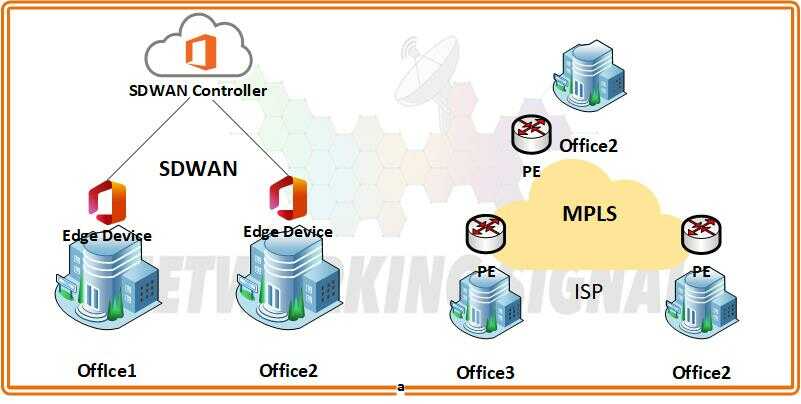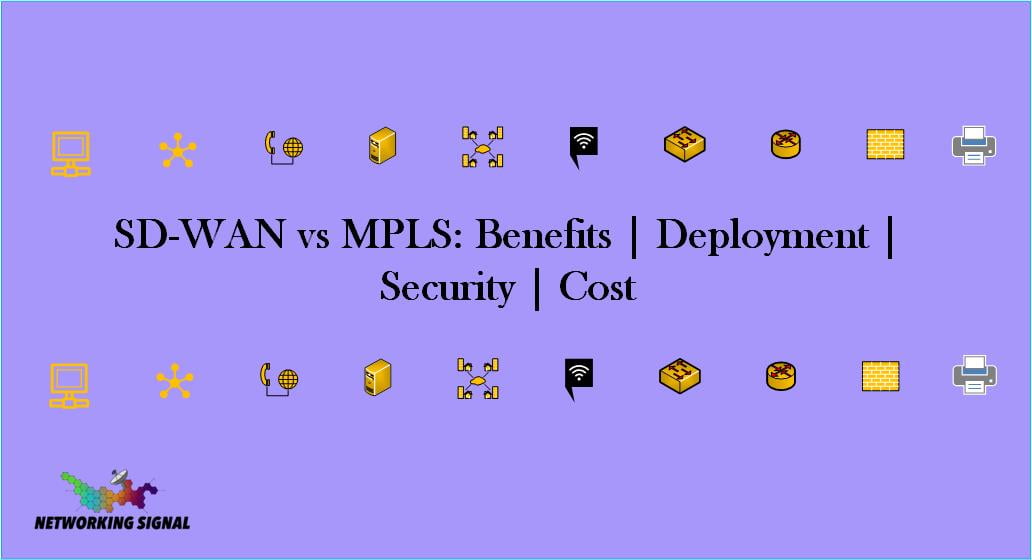When it comes to choosing the right wide area network (WAN) technology, enterprises have traditionally had two main options: SD-WAN and MPLS. Both technologies offer advantages for businesses seeking a reliable connection over long distances, but there are some key differences depending on the needs of your organization.
SD-WAN vs MPLS: Which is the Right Choice?
For Home Network: If you are setting up a home network, then SD-WAN can be an ideal choice. It is easier to set up and manage than MPLS and requires fewer technical skills. Additionally, it provides increased flexibility in both cost and features, making it a great option for many home networks.
For Office Network: If you are setting up a network for an office, then MPLS can be the right choice. It is more reliable and provides more features than SD-WAN. Although it requires more technical knowledge to set up, it offers better performance and scalability over long distances than SD-WAN.
For Enterprise Network: If you are setting up a large enterprise network, then MPLS is the best choice. It can easily accommodate huge amounts of data traffic and provides increased security for sensitive communications. Additionally, it offers more flexibility in terms of features and scalability than SD-WAN.
For Hybrid Networks: If you need to connect multiple sites with a combination of physical and virtual networks, then hybrid networks are the way to go. Hybrid WANs provide the flexibility of using different technologies for different segments of the network. This allows organizations to choose the best technology for each part of their network in order to maximize performance and cost savings.
What are the Benefits of SD-WAN Over MPLS?
There are several advantages to using SD-WAN over MPLS, including:
- Lower cost: As SD-WAN is based on a broadband internet connection rather than expensive leased lines, it can offer much lower pricing. This makes it ideal for businesses that need to connect multiple offices without breaking the bank.
- Easier deployment and configuration: SD-WAN solutions are easier to deploy than MPLS, as they can use existing broadband connections rather than having to install special leased lines. This also means that configuration is simpler and more efficient.
- Improved performance: By routing traffic through multiple paths, SD-WAN can offer improved performance over traditional MPLS networks. This is particularly useful for applications that require low latency, such as VoIP and video conferencing.
- Increased flexibility: SD-WAN can be deployed in a variety of ways, allowing businesses to customize the routing of their traffic for specific needs. This makes it easier to adjust networks as new requirements arise or changes are made to the existing infrastructure.
What are the Benefits of MPLS Over SD-WAN?
MPLS also has several advantages, including:
- Greater security: By encrypting data and controlling which users can access specific networks, MPLS provides greater security than SD-WAN. This makes it ideal for businesses that need to keep their data safe from outside threats.
- Dedicated link: Unlike SD-WAN, MPLS provides a dedicated connection between two points that cannot be used by anyone else. This makes it more reliable and less susceptible to external interference or congestion on the public internet.
- Better Quality of Service (QoS): Because it is a dedicated connection, MPLS can provide better QoS than SD-WAN. This is especially important for businesses that rely heavily on their network performance, such as VoIP or streaming services.
- More control: By setting up virtual private networks (VPNs) within the MPLS infrastructure, businesses can have more control over how their data is routed and which users can access specific networks.
When to Use SD-WAN over MPLS?
SD-WAN is typically the best choice for businesses that need to quickly and cost-effectively connect multiple offices across a wide area network (WAN). It is also ideal for companies that do not require a dedicated connection or need to maintain higher levels of security.
When to Use MPLS Over SD-WAN?
MPLS is typically the best choice for businesses that need a dedicated connection between two points, as well as those that require greater control and security over their data traffic. It is also ideal for companies that rely heavily on their network performance, such as VoIP or streaming services.
Compare the Cost of SD-WAN and MPLS

The cost of SD-WAN and MPLS can vary significantly depending on the needs of your organization. Generally, SD-WAN is more affordable than MPLS, as it uses existing broadband connections rather than having to install specialized leased lines. However, for companies that require a dedicated connection or need to maintain high levels of security, MPLS may be a more cost-effective choice.
Examples:
- For a company with five remote offices that need to be connected, SD-WAN may be the more cost-effective choice as it can use existing broadband connections.
- For a company that relies heavily on VoIP and video conferencing and requires high levels of security, MPLS may be the better option as it offers dedicated links and better quality of service.
Compare the Deployment of SD-WAN and MPLS
The deployment of SD-WAN and MPLS can also vary significantly depending on the needs of your organization. In general, SD-WAN is easier to deploy than MPLS as it does not require specialized leased lines or hardware. On the other hand, MPLS requires more configuration and setup in order to ensure that it provides the desired levels of security and reliability.
Example:
- A company that wants to quickly connect multiple remote offices may choose to deploy SD-WAN as it is quicker and easier to set up than MPLS. On the other hand, a business that needs high levels of security and reliability may choose to deploy MPLS due to its greater control over network traffic and its dedicated connections.
Compare the Security of SD-WAN and MPLS
In terms of security, MPLS provides greater control and encryption than SD-WAN due to its dedicated links. This makes it ideal for businesses that require higher levels of data protection or those that are transferring sensitive information across their network. On the other hand, SD-WAN does not offer the same level of security as MPLS but can be more secure than using a public internet connection.
Example:
- A company that needs to transfer sensitive customer data across its network may choose to use MPLS as it offers greater control and encryption than SD-WAN. On the other hand, a business that needs an easy way to connect multiple remote offices may opt for SD-WAN as it is more secure than using a public internet connection.

